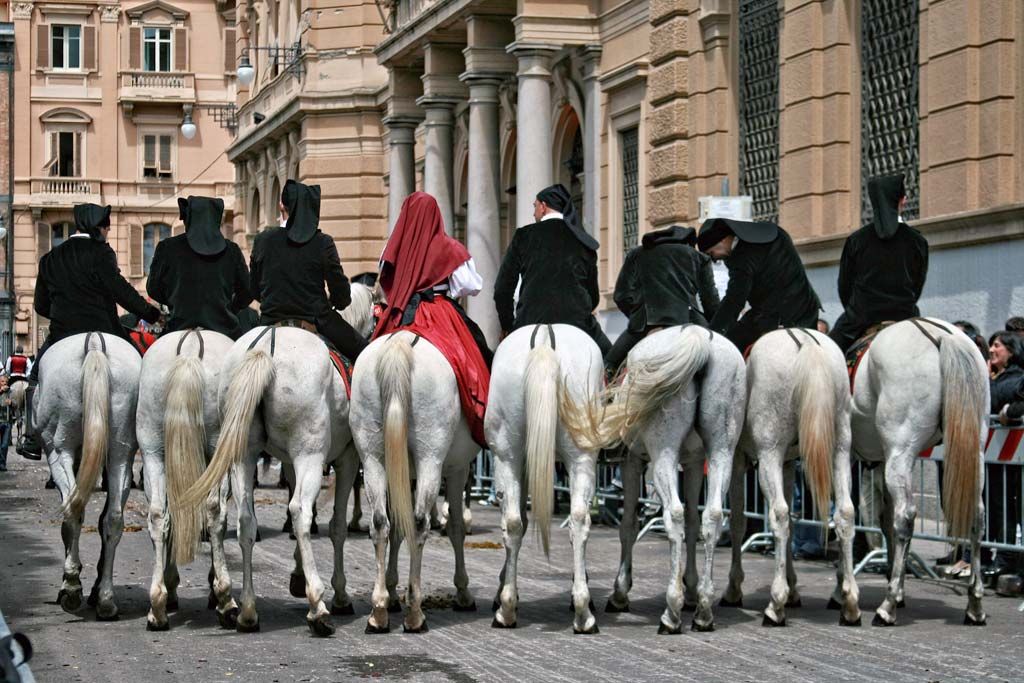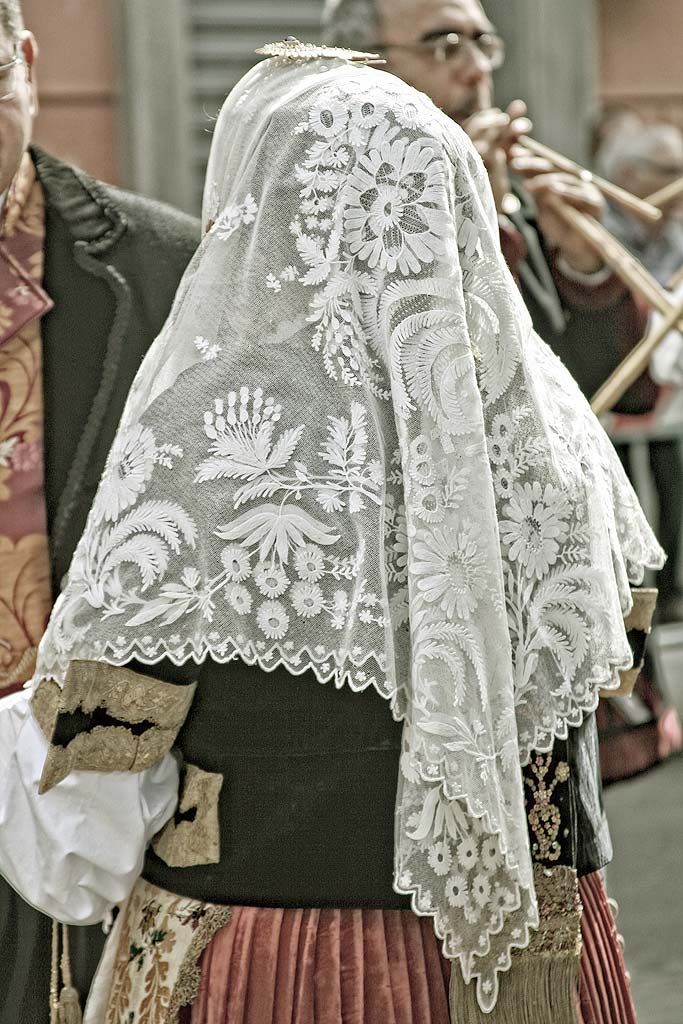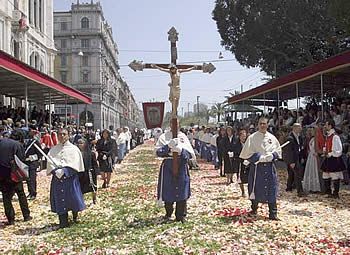The Festival of Sant'Efisio
The story of Sant'Efisio has on occasion been considered merely a popular legend. However, the widespread religious sentiment of the Sardinians, and in particular of the people from Cagliari, has meant that the story has resisted the passage of time and remains deeply-rooted in the hearts of the population.
In spite of the lack of documented evidence, according to tradition Efisio, the son of an aristocratic family from Elia (Jerusalem) and captain in the Imperial Roman Army, was sent to Italy to fight the Christians. One night an image of the cross appeared to him in a vision and Efisio converted to Christianity. He arrived in Sardinia and refused to reject his faith so the local Governor ordered his execution at Nora on 3rd January 303 AD. Later, on the site where Efiso was decapitated a church was built where the saint was buried
The Festival
The tradition of the festival of Sant'Efisio originated in the mid seventeenth century when a terrible plague swept across Sardinia decimating the population in four years.
Ten thousand people died in Cagliari alone and the town councillors prayed to Sant?Efisio to save the city. When the epidemic finally passed in May 1657 the people of Cagliari kept the promise they had made to the saint and carried his sacred image in procession from Cagliari to Nora, where he had been executed. Since then this date is considered as the year this age-old tradition began.
The festival of Sant'Efisio takes place every year on 1st May and is a magical celebration of faith and folklore, the sacred and the profane. On the day of the festival people from all over the island gather together in Cagliari to take part in the procession. The event attracts thousands of tourists who are welcomed as privileged spectators of what is probably the island's most authentic manifestation of popular worship. The procession starts from the church in the Stampace neighbourhood where the statue of the saint is kept. At the head are entire families from the Campidano plains wearing traditional costumes and they are accompanied by the festive sound of the 'LAUNEDDAS', an ancient Sardinian wind instrument. They pass through the streets on ox-drawn carts, 'IS TRACCAS', which overflow with ancient utensils from traditional daily life in the rural communities. The carts are beautifully decorated with colourful hand-made blankets and rugs and the oxen are adorned with flowers and garlands. After them come the dozens of representatives from towns and villages from all over Sardinia

Alter Nos
Men, women and children pass by to the sound of songs and prayers wearing traditional costumes, enriched with precious jewels made by the island's master goldsmiths. After this long, colourful folk display the real religious procession begins as the faithful march through the streets bearing the casket which contains the sacred image of Sant'Efisio. However, it is preceded by the profane figure of Alter Nos, the town councillor delegated by the mayor to release the city from the ancient vow. The figure of Alter Nos again steals the limelight from the saint as he rides by on horseback dressed in a nineteenth century costume of top hat and tails. He symbolically represents the authority of the local council, adorned with the sash of the Tricolour and the 'Toson d'oro'.Finally the statue of the saint surrounded by the praying faithful begins its journey to Nora. It is carried along via Roma on a bed of petals, 'SA RAMADURA', and saluted by the sirens of ships at anchor before it is carried to the place where the saint was martyred. The procession assumes a more sombre atmosphere as moments of worship and prayer prevail. Hundreds of men and women follow the saint on foot to Nora where it stays for three days before it is once again carried back to the church in Cagliari

 English (UK)
English (UK)  Italiano
Italiano 